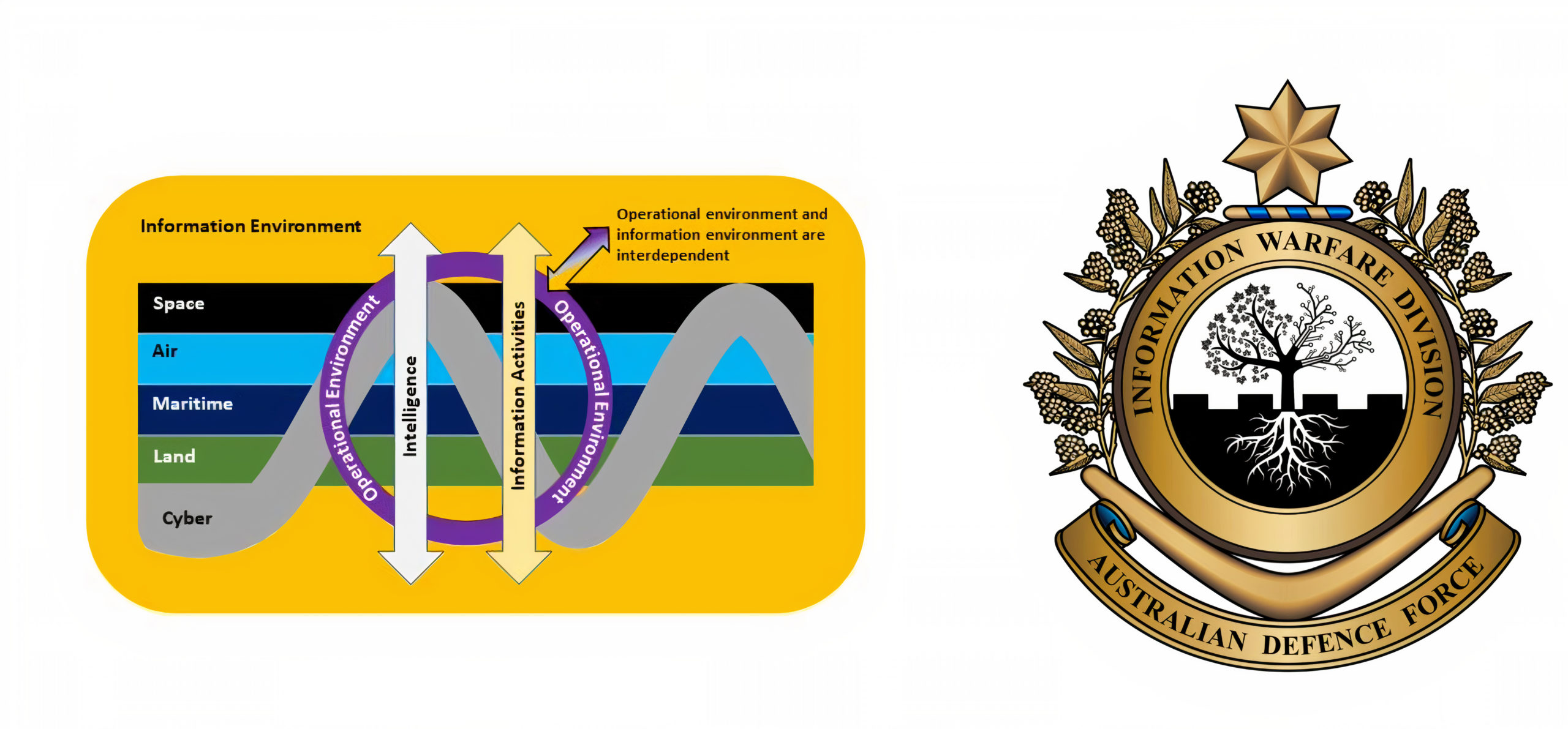By Robbin Laird
At the March 24, 2022 Williams Foundation Seminar on the networked integrated force, six ADF officers provided insights with regard to the way ahead for the ADF in building out its networked integrated force.
The RAAF perspective was provided by Air Marshal Mel Hupfeld, Chief of the Air Force, by AVM Robert Chipman, Head of Military Strategic Commitments. MAJGEN Susan Coyle, Head of Information Warfare, BRIG Ian Langford, Director General Future Land Warfare, CDRE Darron Kavanagh, Director General Warfare Innovation Royal Austrian Navy and Tony Dalton, Deputy Secretary National Naval Shipbuilding.
Together, the speakers provided an overview on the state of the force as well as a variety of perspective on the way ahead.
In this article, I leverage all of the presentations to highlight a number of key takeaways with regard to perspectives in the ADF on shaping a way ahead for the networked integrated force.
Air Marshal Mel Hupfeld, Chief of the Air Force
Air Marshal Hupfeld, now head of the RAAF, was previously head of Force Design, and then Joint Operations, came to the Air Force position through a significant focus on joint by design efforts. He noted throughout his remarks how challenging it is to get a common culture to drive integrated force operations, but also cautioned that as the ADF works such an effort, it requires as well a wider national effort to fully deliver a common Australian defense policy optimized to defend Australia and its interests.
This is how he put it: “Across defense now, we have a defense purpose that’s clear and articulated. We have missions that they’re all nested under the one mission set. We are getting alignment on common purposes, common interest, common values. And if you get all those aligned, then can achieve that accelerated transition for a networked integrated force which we are discussing in the seminar.”
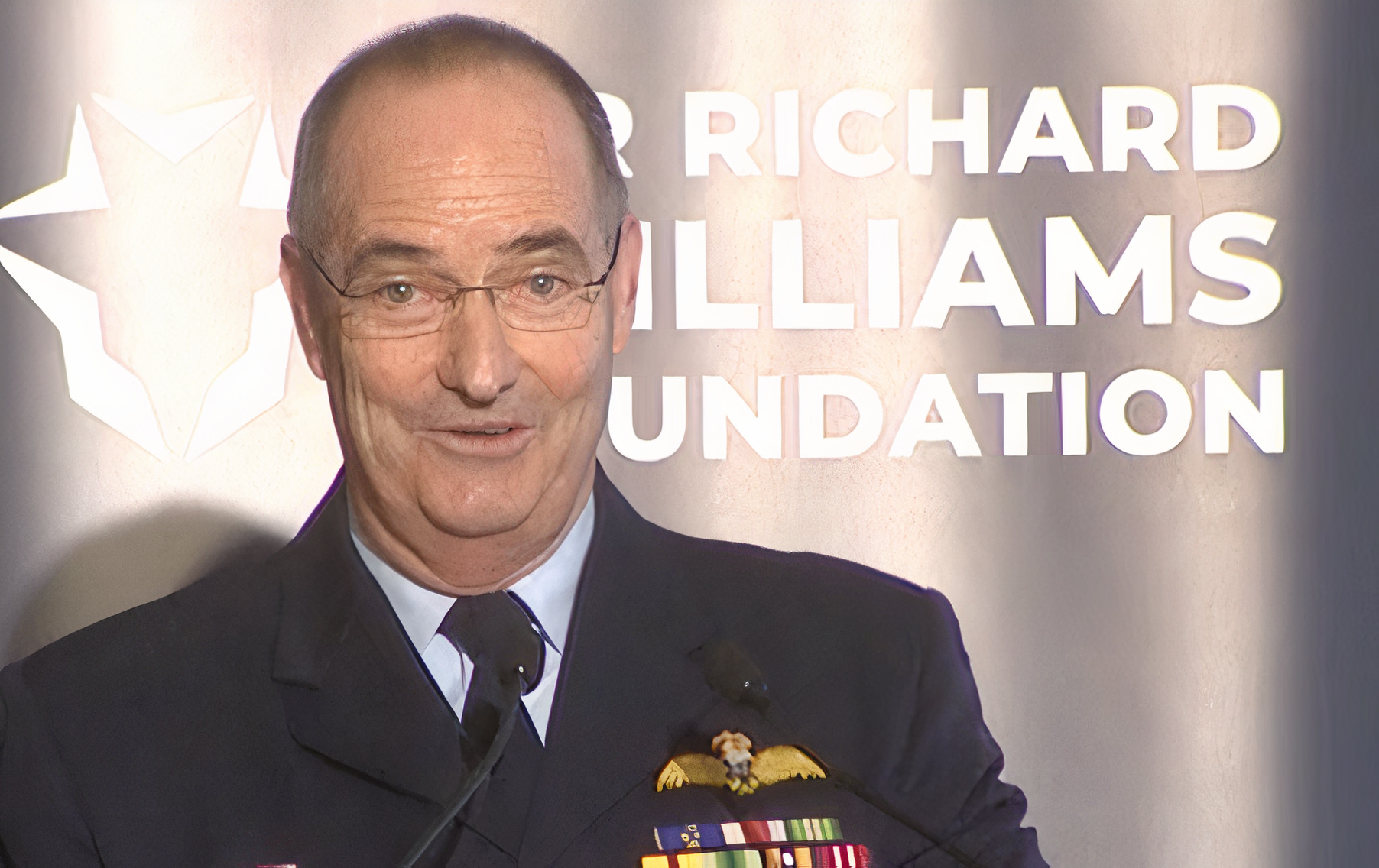
Hupfeld also noted an important point about platforms. New platforms can perform forcing function roles for the force. Air Marshal Hupfeld noted that LHD acquisition as done so for the joint force, and certainly the F-35 has been a major driver of change.
As Hupfeld noted: “The F-35 replaces nothing, but changes everything. And the term fifth-generation really started to drive more focus on integration.”
In a presentation by then head of the RAAF, Air Marshal Davies, I highlighted this important question when discussing innovation and integration. The point is often made that to get where the integrated force needs to go, it is important to get out of stove-piped platform focus and become platform agnostic. Such a conclusion is fine as far as it goes, but platforms are the operating entities from which force viability, capability and integration are generated.
And when discussing the way ahead for platforms, Davies highlighted the importance of gaining a joint force perspective with regard to doing so, and he discussed this from the standpoint of the Air Force’s Plan Jericho approach.
As he noted in a 2017 interview which I did with him: “A key benefit from the Plan Jericho approach is reshaping the language. It is not about how does this new platform fit into the force as it is, it is about how does this new platform enable the force to fight the way we need to be able to in the future? It has to be realistic but in a sense the reality we are looking at is not just the Air Force as it has fought in the past and present, but the Air Force as it vectors towards the future fight.
If you don’t do this you will be only discussing and debating platforms in the historical combat space. And when we come to new platform decisions, we are positioning ourselves to ask the right question of the services: How does a particular platform fit how we will need to fight in 10 year’s time? Is the Navy or the Army or the Air Force entitled to that particular capability choice if it doesn’t fit that criteria?”
AVM Robert Chipman, Head of Military Strategic Commitments
The Plan Jericho reference provides a good transition to highlighting the presentation by the original co-director of Plan Jericho, AVM Chipman. This is how he put the contribution of the Plan Jericho launch and effort on the ADF: “Faced with the challenge of accelerating the transition to a network integrated force, Plan Jericho delivered an organizational change program.”
And the challenge of shaping a more lethal and effective ADF has simply grown over the past few years. As AVM Chipman underscored: “Integration was originally about connecting specific platforms to build a system. We had fighters, bombers, electronic attacking aircraft, airborne early warning and control, platforms with specific roles networked to function as a system. This delivered a decisive advantage that we continue to extend and optimize delivering system performance beyond the sum of its parts, conquering quantity with quality.
“But that technological advantage is eroding and some of the trends in technical development aren’t favorable to us. Our adversities are building capabilities that target the vulnerabilities in our system and denies the advantage of integration.
“At the same time, they have deployed technologies and weapon systems that demand even greater integration from us. We now need a network of sensors, geographically dispersed on the ground, at sea, in the air and in space, operating over a broad bandwidth just to track threats to our mainland. In the same way we need a network of effectors with mutually supporting and reinforcing fires to provide the survivability and lethality to project, penetrate and deliver effects to our adversaries.
“We are locked in a race to integrate new technologies into these sensor and effective grids. Extending the performance of human competition through artificial intelligence and extending the boundaries of human competition to new domains. And our integration advantages are now hotly contested right across the spectrum of conflict.”
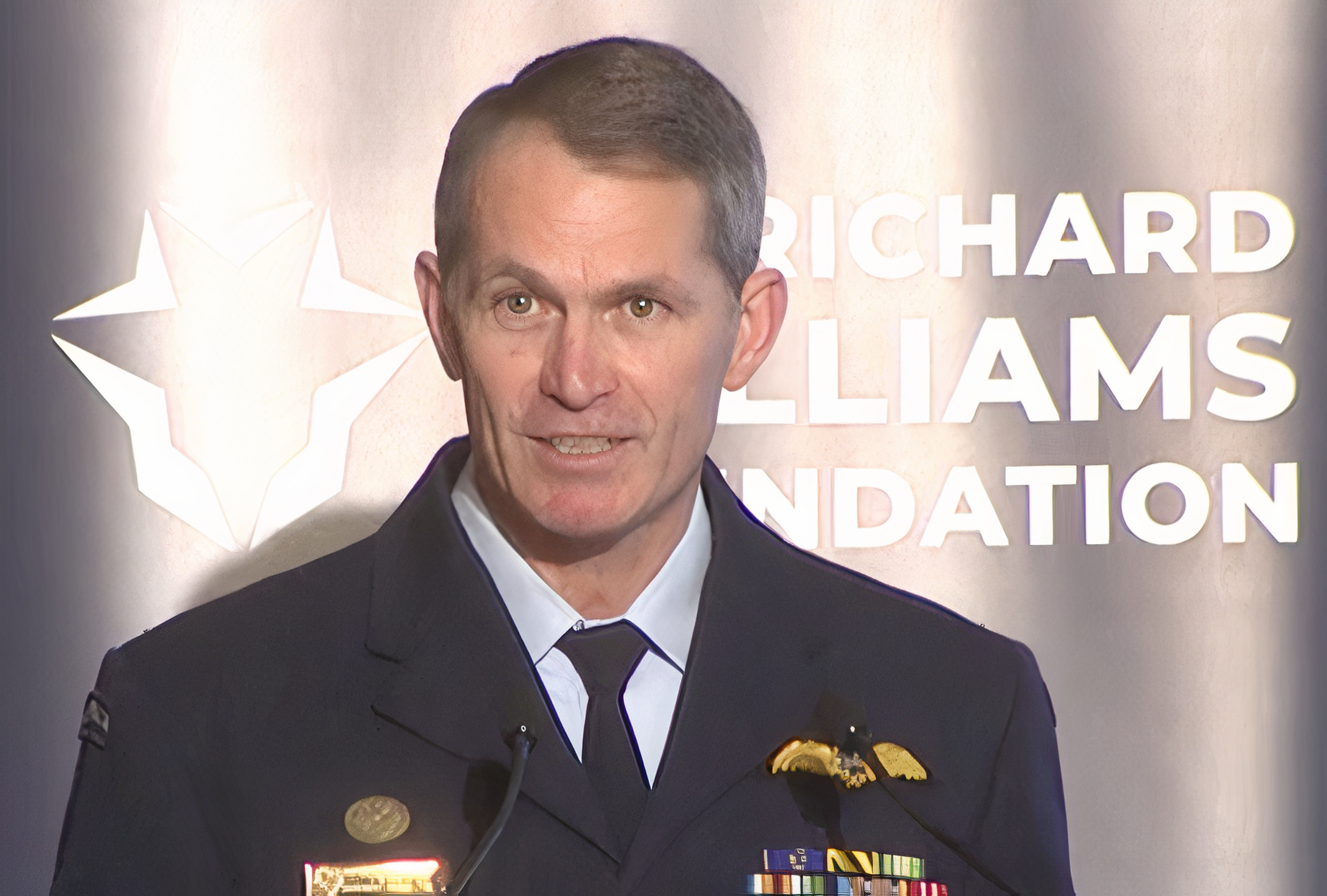
He focused on the importance of integration not just within the ADF but within the Australian defense write large, in terms of government activities and social resiliency. “The ADF contributes to national power as an integrated force. We strive to strengthen and reinforce integration within the ADF and across domains, addressing the human procedural and technical dimensions to integration, we must elevate our thinking further for to achieve our mission. Military power needs to be integrated with other elements of national power.”
In my own view, the build out of more flexible distributed integrated forces allows for expanded capability to operate throughout areas of interest.
But to get the real advantage for such evolution of forces, it is crucial that the civilian side of government work their own capabilities for more effective crisis management.
This is how AVM Chipman characterized this challenge: “We compete by influencing others to our cause, by generating sufficient strategic weight to attract partners to our orbit rather than seize space to our adversaries. We compete by promoting an open, liberal, prosperous region that respects sovereignty not by bending others to our will through manipulation and coercion. We compete by contesting, demonstrating resolve at the intersections of national interest, exercising our freedoms abroad and protecting our sovereignty at home.
“And we compete by posturing and preparing forces ready to respond, should the competition heat up further. And all the while preserving pathways for de-escalation through our discipline and ethical execution. All ADF activities, signal capability and intent, and all our activities must be a deliberate expression of our national will. We enhance the credibility of our national resolve when all of our collective actions are aligned to it.”
From the beginning of the Williams Foundation seminars since 2014, force integration has been a key theme. What has changed since the outset is a focus on longer-range effectors and upon the resilience challenge and how to meet it.
AVM Chipman put this challenge very well in this illustration: “Air Force is close to enhance its maritime strike capability, with an integrated package of F-35s and F-18 Super Hornets armed with Long Range, Anti-Ship Missiles. Guarded by P-8s and MQ-4 Tritons, controlled by E-7 Wedgetail, and projected by KC-30s. Collectively, this package can strike with confidence against any enemy vessel in our region but what happens next?
“When the aircraft return to unprotected airfields, and are refueled, and re-armed by fragile supply chains, or when our financial system is brought to the brink of collapse, and critical infrastructure is rendered inoperative, or government services disrupted in retribution. A boxer needs a powerful right hook, but he can’t use it if he can’t protect his chin. Integration is a force multiplier, but it also demands resilience.”
MAJGEN Susan Coyle, Head of Information Warfare
The presentation by the Head of Information Warfare built out from Chipman’s core point that integration needs to be built out from a foundation of resilience. She cautioned throughout here presentation that in the cyber and information warfare domain, that this is not only challenging but an ongoing task, notably in terms of conflict with peer competitors.
She noted that “it’s network-centricity that offers the real force multiplier effect for a fifth-generation joint force.” But that this capability requires an ongoing effort, and simply cannot be assumed by flying fifth generation platforms, for example.
She underscored the nature of the challenge as follows: “The framework and apparatus of the fifth-generation force is substantially in place. But is it? Is that as true as we think it is? Are we resting on our laurels by not pushing even further?
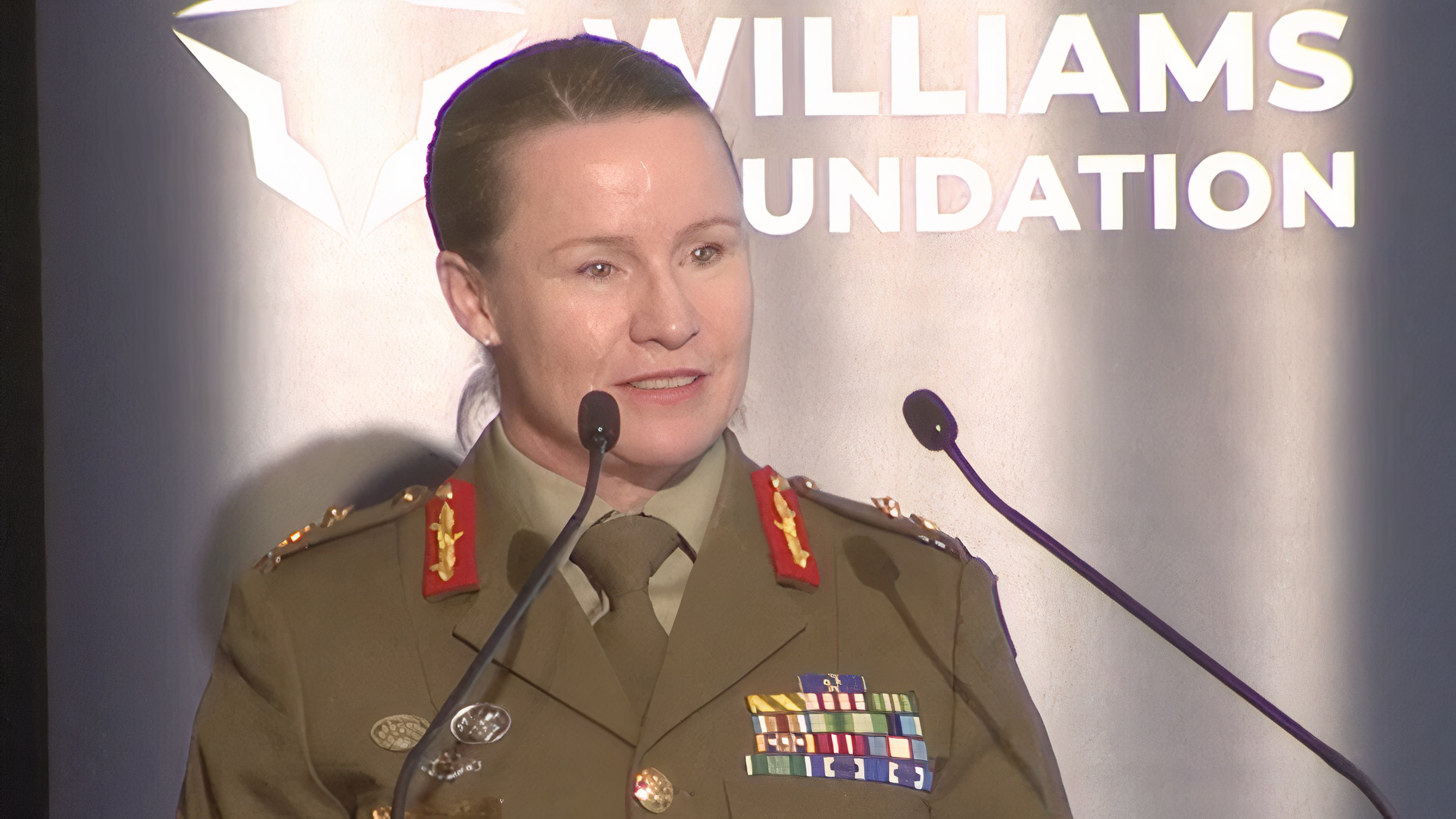
“As we’ve gone from a fairly aggressive acquisition of link enabled platforms, have we made sure that our network backbone has the capacity to satisfy our demand? As more assets come into service with wide ranging functionality and security overheads, have we put the right testing and training in place so that we know the network can be fully integrated? Are these data links resilient enough to get the job done?”
MAJGEN Coyle made a very crucial point that there is need to invest in the foundational networking capabilities of the fore proportionate to investing in the weapons and platforms which operate within such a networked force.
“We’ve definitely been investing in appropriately skilled and clear network engineers, test and evaluation equipment, and significant processes, secure facilities where this could occur, haven’t we? Because if we don’t, we’d risk losing the force multiplier effect that our networks provide. And so the fight wouldn’t be one for the joint force. It would be one in which every service operated independently….”
Recognizing that the ADF is building a fifth-generation force can see the F-35, for example, as a catalyst for change, but working through how to leverage those dynamics to shape a capable integrated and networked force is crucial as well.
Here is how she put it: “Air force has led the way in achieving fifth generation capabilities, but we need to be clear on the difference between leading the way and leaving the joint force behind. Much like the force projection that outpaces its logistics, a fifth-generation air force that doesn’t realize that it’s just the tip of the spear is one that fundamentally could find itself out of balance.”
How then to close the gap? Here is what she identified as a way ahead. “Center led design of the joint forces’ backbone is critical. It needs to be deliberate, and it needs to be data-centric. Instead of bespoke systems and networks that make it harder to integrate as a joint force, look for opportunities to be more joint.”
And she had this advice for the defense industrial sector based on this requirement: “For our industry partners, the future is open architecture that let us share with partners of choice, not proprietary systems. Alternates may let you corner the market, but it’s one in which defense has a rapidly decreasing interest, and it’s worthy of making sure that your supply chains are cyber worthy because that’s increasingly becoming a discriminator as well. The cost for defense to deal with those vulnerabilities and the fact that they may make your solutions unpalatable.”
BRIG Ian Langford, Director General Future Land Warfare
In BRIG Langford’s presentation he focused on the question of what constitutes combat success and victory when engaged in network enabled warfare. Disrupting networks, subverting networks and various forms of network disruption now become key tools shaping a path to victory, notably in limited war.
And certainly, from this standpoint, namely, a network enabled force and joint C2, the color of the uniform within the joint force becomes less significant in determing the contribution of a particular warfighter. The ADF as a whole faces this challenge: “How do we provide the kind of baseline network assurance when it comes to integration?”
In a way, Lanford was highlighting the question of the network foundation as a key element for enabling the integrated force and its path to success, similar to what MAJGEN Coyle was highlighting. For example, he asked the following question: “what is the significance of an undersea cyber community in terms of our own resilience, our agility, and our integration.”

And certainly, the ADF as a force for a medium power faces the challenge of deterrence of larger powers in the region. Here he noted:” To quote a former prime minister of Singapore, “How does a small fish in a pond of big fish become a poison shrimp?” How do we provide the kind of deterrence functions in a period where we are always at risk of being out escalated and how do you provide those shaping, or pre conflict, or competition effects? and are credible?”
BRIG Langford underscored the importance of decision superiority in shaping favorable outcomes. “It is about being able to generate relative tempo and superiority at certain points in the conflict that enable victory going forward.”
CDRE Darron Kavanagh, Director General Warfare Innovation, Royal Austrian Navy
CDRE Kavanagh provided a Royal Australian Navy perspective on the way ahead with regard to the integration of the maritime domain within an integrated warfighting force. Cavanagh’s presentation certainly recalled a core point made by Vice Admiral Barrett at 2016 Williams Foundation seminar when he underscored the following: “we are not building an interoperable Navy; we are building an integrated force for the Australian Defence Force.”
Kavanagh highlighted the importance of the evolving role of the maritime force in the offensive-defensive enterprise which a kill web force embodies. “The proliferation of advanced technology and the associated rapid advances in offensive systems such as high-speed and sophisticated anti-ship missiles means that we, more than ever before, need to critically analyze and prioritize our capability development plans to ensure the necessary force protection measures are available while simultaneously developing offensive systems and war-fighting procedures that will contribute to our mission’s success.”
The challenge of getting operational decisions done rapidly and correctly at the point of interest is increasingly crucial, which is why decision making at the tactical edge enabled by new ISR and C2 capabilities is increasingly important for an evolving maritime force.
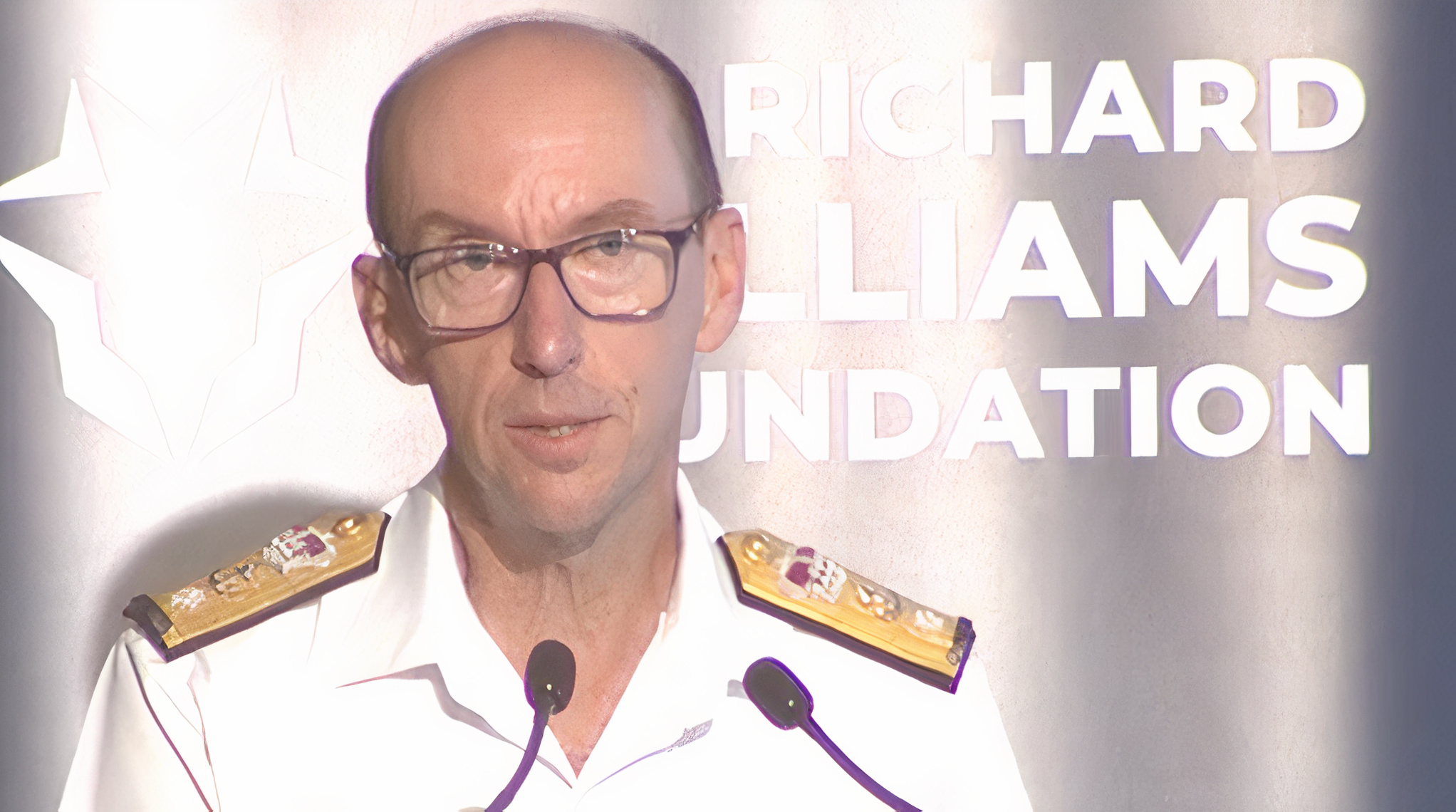
This is how CDRE Kavanagh framed the challenge: “The speed at which decisions must now be made and are being made by our adversaries and the need to incorporate data from a multitude of sources is key. Intelligence must be analyzed and interpreted quickly to serve the war fighter. The concepts of what are the weapons in our critical capabilities is changing.
“From the traditional platform centric views towards innovation and artificial intelligence, robotics, and sophisticated senses amongst many others, so that we can achieve cognitive superiority and decision-making advantage over an enemy by being networked and integrated across our three defense services. Our ammunition is actually information and our success will be dependent on how accurate and relevant it is and our skill in using it. Our transition to developing this capability is critical.
“Now, the Navy sees itself as providing, not just traditional sea power with our ships and aircraft and submarines, whether they’re crude or uncrude, but through intelligent and integrated networking across defense. We are an integral part of a potential response that presents any adversary with an unacceptable level of risk to deter aggression against Australia and our national interests.”
And by building out the networked distributed but integratable force, Navy is in a good position to leverage maritime autonomous systems.
Put another way, by building the proper foundation it is possible to add new ISR capabilities, for example, which lead to enhanced decision making rather than information overload.
This is how Kavanagh framed the opportunity being opened up by maritime autonomous systems:
“In the maritime context, it’s clear that our journey towards a networked integrated force is essential to enable Navy to leverage the full capabilities that autonomous uncrewed and optionally crewed systems can give us. There are real opportunities to leverage those systems, to deliver effects in a more asymmetric manner, using their attributes of low-cost mass. I.e., the use of the smart, the small, the many, the cheap to complement our traditional complex large, few, expensive, crude platforms.”
If we return to the point made in BRIG Langford’s presentation concerning the importance of mastering the disruption and decision-making cycle in conflict within network warfare, Kavanagh adds this nuance: “More than ever, success in warfare is likely to depend on our capability to think creatively, to manage our information as a weapon of warfare. Tactically, we must use our technology and expertise to disrupt and degrade our adversaries’ decision-making. And we must ensure that our decision-making is sound and timely, base it on the best available inputs and trust it.”
Tony Dalton, Deputy Secretary National Naval Shipbuilding
During the time in which the Williams Foundation seminars began to assess the standup and evolution of the fifth generation enabled ADF, the commitment to shape a naval shipbuilding enterprise became a key piece for shaping the sovereignty piece for the way ahead for the ADF.
The question of what exactly is sovereignty in defense is a key one, and one which was addressed in some detail in the second seminar of 2021 in terms of debating what space sovereignty for Australia might mean.
At that seminar, AVM (Retired) Chris Deeble, now CEO Northrop Grumman Australia, provided a useful perspective on the sovereignty issue.
“What is sovereignty? The pursuit of sovereignty shouldn’t be an excuse for wanting to do everything. Sovereignty and resilience go hand in glove from my perspective and how we build that strategy. When we think about space, we often think about the things that make for great photo opportunities. A launch, a satellite, those great pictures of a satellite orbiting around. They make the great photo opportunities. These are going to be important that supply chains that underpin that, will remain important for us. But we must prioritize our effort and investments.
“We must ensure that from the get-go, we create that viable, scalable, innovative, and sustainable space ecosystem. And it must be underpinned by business cases that can goes to the viability and sustain sustainability at the end of the day
“This will be a significant challenge for us as we move forward. Defining things in requirements terms is going to be difficult. We will have to be thinking about that in outcomes terms. As a space nation, we must have a clear strategy that articulates our sovereign security and resilient space capability outcomes. We must develop a cohesive and aligned national strategy that meets both the civil and defense needs now and into the future.
“We must ensure that we prioritize and align our investments. We cannot lose sight of the underlying business cases. We can’t do it all. We have to create a sustainable viable outcome for us as we’re moving forward. The lexicon is changing, it’s a great first start.
“But if we want to be a space nation, if we want to create space ecosystems for the nation, if we want to have a viable, enduring, sustainable, scalable industry, from now and into the future, we have to turn that rhetoric into reality.”
And that the March 24, 2022 seminar, AVM Chipman provided an additional way to define sovereignty among allies. This is how he put it: “Allies don’t surrender sovereignty to each other, they share it, allies and partners strengthen national power and help mitigate the risks of critical vulnerabilities.”

So what does sovereignty mean with regard to a national shipbuilding enterprise in Australia?
Dalton asks: “What is a sovereign capability? How do you define what a sovereign capability is? And how does that come together in what we do and what we deliver to generate out sovereign capability?”
The first part of his answer with regard to shipbuilding is the importance of having within Australia the know-how and know why with regard to modern shipbuilding.
The second part of his answer is the importance of having that core knowledge capability in order to sustain, maintain and evolve the force.
The third part of his answer revolves around the core need for resilient supply chains, and by building ships in Australia, the supply chain piece is crucial not just for the build phase but the sustainability phase as well.
And the ability to integrate new ships into the ADF requires as well significant domain knowledge with regard to the ongoing upgrade process, notably with a software upgradeable force. This is how Dalton put it: “We need to be able to use the knowhow and the know why we get out of our building programs to be able to then upgrade it and take it into the next level of operations. We need to understand the design assumptions.”
He provided an example with regard to the upgrade process on the venerable Collins class submarines. And this is how he highlighted the relationship between understanding design assumptions and the ability to update a class of ships.
“With regard to our Collins class submarines, we really are going all the way back to what were the original designs to build that class. How do we actually insert a new main motor in that boat? How do we insert new diesel generators in that boat? And that raises some really interesting questions. To insert a new diesel jet generator which weigh a lot less than the 1980s diesel generators, that raises design challenges.
“If you take 12 tons out of the back of the boat, the balance of the boat changes. The other really interesting thing around diesel generators is that on a conventional submarine, how we refresh the atmosphere inside the boat is by running the diesel generators. And it sucks air in through the snort and it refreshes the atmosphere. New diesel generators are much, much more efficient than 1980s diesel generators. And in fact, they use 50% less air, which is a good thing unless you’re in a submarine and you’re trying to change the atmosphere over in a very short period of time.
“Understanding design assumptions and design principles that you get from building is a really important aspect that you then can take into upgrades into the future. And the Navy is committed to an evergreen process which revolves around positioning for a lifetime of upgrades,”
At the first 2021 seminar last year, Chief of Navy, Vice Admiral Noonan, highlighted the impact of an evergreen process for naval modernization and in doing so underscored the importance of the made in Australia piece at the center of Dalton’s presentation.
“The joint integration piece is critical. I cannot stress that highly enough in terms of we must ensure that these systems are integrated. Not just integrated into the platforms or their parent platforms but integrated into the force.
“And they are capable of being evergreen. This is the new term for spiral development. It’s about ensuring that we have systems that remain contemporary, and I am challenged on a daily basis about capability gaps and about deficiencies in the long lead times that require us in the shipbuilding space. It takes about 10 years to build a submarine, or five years to build a frigate.
“And are we incorporating old technologies? Bottom answer is no, in that we are designing future and evergreen in growth into our platforms. And I think that’s a very important concept that we have not always fully grasped.
“Finally, is the importance of made in Australia. Our systems must be designed for the very unique circumstances that we operate in, particularly in the maritime environment.”
The featured graphic is taken from a slide from MAGEN Coyle’s presentation at the seminar.


